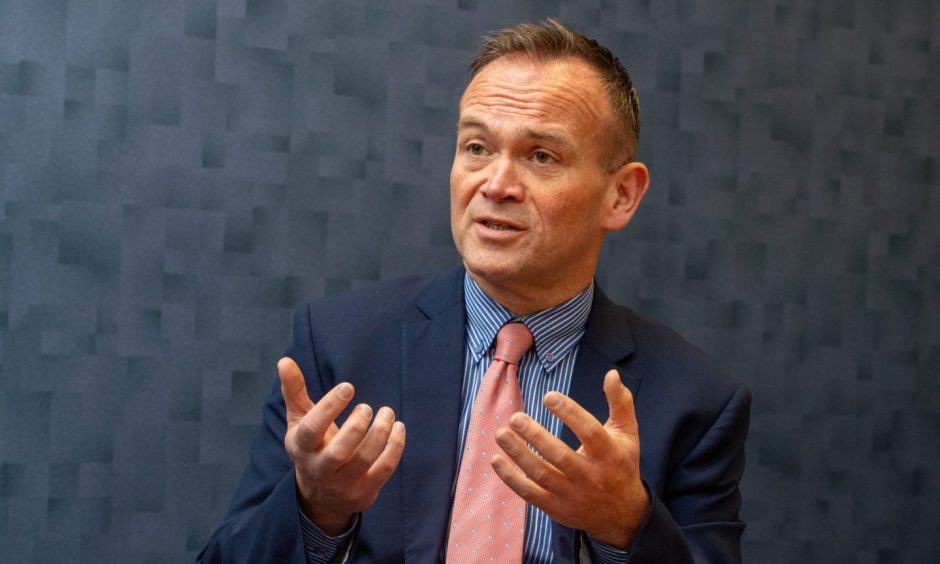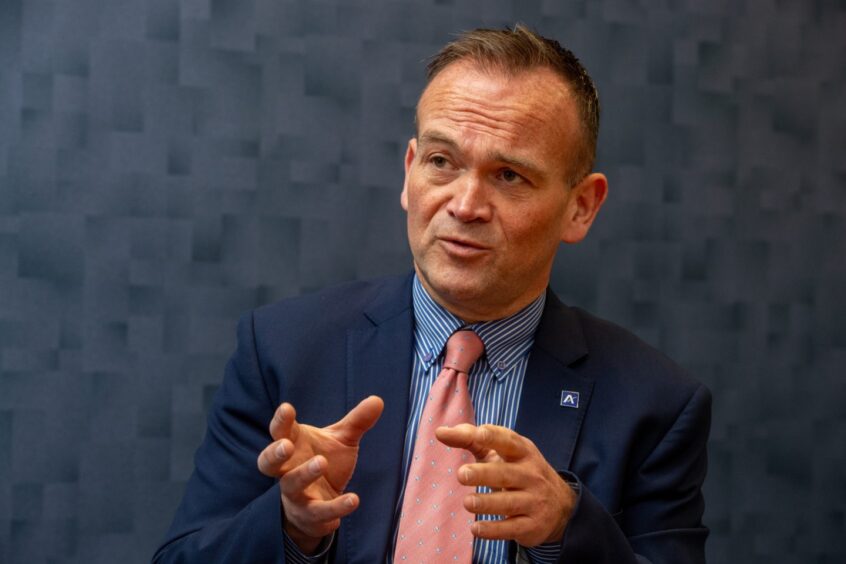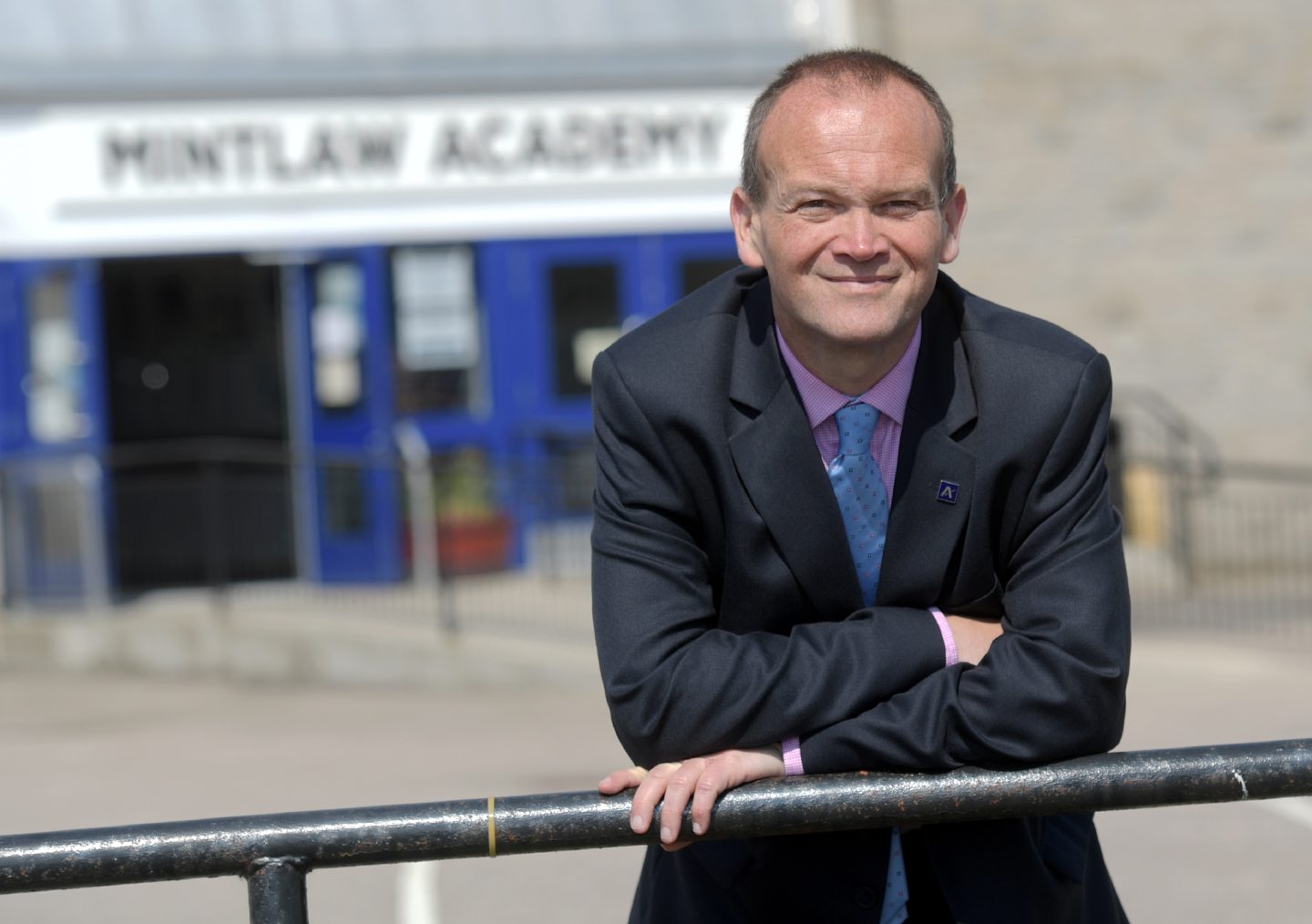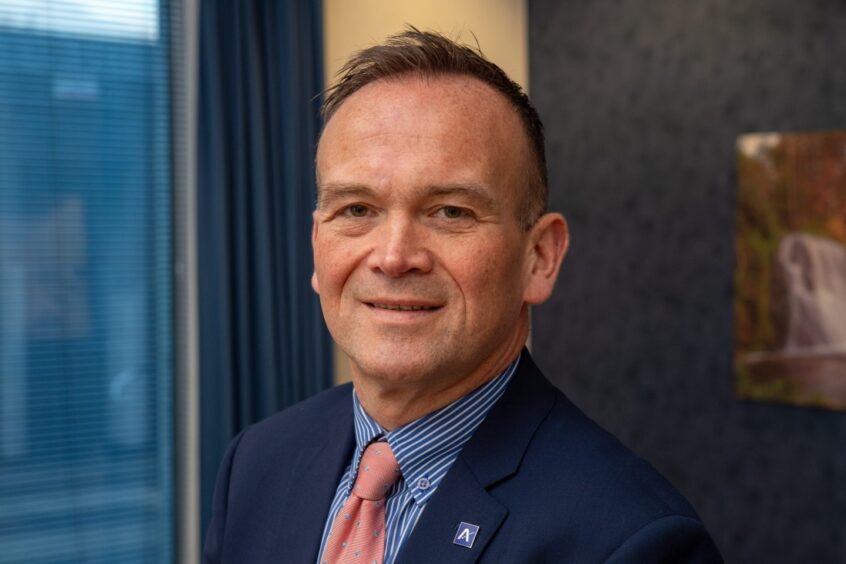
Every secondary school in Aberdeenshire is affected by teacher shortages, according to the council’s director of education.
Laurence Findlay admitted that the situation is ‘reaching crisis point’, in an interview with The Press & Journal.
Mr Findlay said that standards at schools in Aberdeenshire remained high, despite head teachers having to be more and more ‘creative’ to make up for a shortfall in teachers.
The education boss is gearing up for crunch talks with cabinet secretary for education Jenny Gilruth on Wednesday, as the council seeks to work with the Scottish Government to get teacher numbers in the north-east back on track.
In a wide-ranging interview, Mr Findlay told The P&J he was leaving no stone unturned to resolve the situation.
Why is there a teacher shortage in Aberdeenshire secondary schools?
“There’s a teacher shortage across the country, but the issue is more acute in the north-east,” said Mr Findlay.
“Personally, I think we need to review our approach to initial teacher education in Scotland, and the teacher induction scheme particularly. Because it’s clearly not working.”
Every year, councils request probationary teachers from the General Teaching Council for Scotland (GTCS), which allocates them to local authorities on behalf of the Scottish Government.
A probationary teacher is a newly-qualified teacher undertaking their first year as a teacher, under training conditions. Aberdeenshire usually gets between 100 and 130 for primaries and about 40 for secondaries.
This year, Aberdeenshire Council requested 66 secondary probationary teachers. They were allocated just 18, which by head of population is lower than any other authority in Scotland. And only 12 turned up, because six dropped out.
Teachers being sent to the central belt: ‘They don’t have the shortages we do in Aberdeenshire’
Under the preference waiver scheme, student secondary teachers can choose to be placed anywhere in Scotland, for which they get an £8,000 payment.
“Things have changed post-pandemic.
“Previously, people who trained in other parts of Scotland would’ve been willing to tick that box and get sent anywhere.
“I think people are a bit more attached to home since the pandemic, and less adventurous, less willing to travel outside the central belt.
“So I think we need to renew our whole approach to initial teacher education to make it fit for the future.
“Interestingly though, there are people who are ticking the box, and they’re getting sent to local authorities in the central belt that don’t have the same shortages that we do.
“That’s why I think the whole system needs to be looked at.
“It’s called the preferential waiver system. Well, clearly it’s not very preferential if it’s local authorities in the central belt benefitting from it. They will have challenges as well, but not to the same extent as we’re having.”
What school subjects are most affected in Aberdeenshire?
“We’re struggling to fill core subject teacher roles, and we’re seeing it across a range of subjects.
“Maths is an issue, physics, home economics, technical education, modern languages, art and design. There’s barely a subject area that isn’t affected right now.
“These subjects are not at risk of being taken off the curriculum now, but certainly difficult choices are having to be made about who gets those subjects. You can only spread the resources so thinly.
“We work closely with Aberdeen University, because most of our teachers in the north and north-east do their teacher education there. Their numbers have reduced in a number of key subjects.
“I met with the university the other week, and in modern languages they’ve only got four people this year doing their initial teacher education.
“Now when you think that Aberdeen University tends to supply the local authorities across the north and north-east, you’re going to need more than four modern languages teachers next year.
“And other subject areas are in a similar position. So we are concerned about it.”
What are schools doing to cope?
Mr Findlay said schools were being “really creative” in the face of an escalating teacher shortage crisis.
Some schools are appointing primary specialists to help cover broad general education like literacy and numeracy at S1, S2 and S3.
“But that’s not sustainable in the long term,” said Mr Findlay.
“Because they won’t be able to teach maths or English at National 5, Higher or Advanced Higher.
“So we need to look at some long-term, sustainable solutions. Otherwise you’re going to see the continued erosion of areas of the curriculum.”
Already, some schools are reducing elements of the curriculum, whether it be removing technical education in S1, home economics in S2, or reducing the number of periods pupils have.
Head teachers having to step in to take classes
Head teachers are making “difficult choices”, which Mr Findlay says are getting harder every year.
Schools are advertising posts multiple times, and not getting sufficient candidates coming forward.
Mr Findlay said primary teachers and senior leadership teams stepping in to take classes is becoming more widespread, as schools are left to struggle without specialist subject teachers.
“Head teachers and deputy head teachers, who should be strategically supporting the school, monitoring standards and the quality of learning, all that stuff that leaders should be doing, they’re not getting the time for that because they are committed to teaching.”
He denied, however, that subjects are being ‘watered down’.
“Standards remain high in our schools, and our attainment would suggest that.”
Are there any particular schools or parts of Aberdeenshire that are especially affected?
“Teacher shortages are affecting every secondary school in Aberdeenshire. But those in the north of Aberdeenshire are the most challenging schools to fill vacancies in.
“Fraserburgh Academy and Peterhead Academy I would say is where we face the greatest challenge. Banff Academy is currently fully staffed, but they’ve been very creative in that they’ve got some primary teachers there and so on.”
At Peterhead, the problem of a loss of teachers was being felt all the way back in 2017, when pupils had to drop classes in key subjects, and some were forced to travel to different schools to get the grades they needed.
Is the teacher shortage at secondary schools reaching crisis point?
“I would say it is reaching crisis point, yes.
“That’s why the council has requested this meeting with the cabinet secretary Jenny Gilruth next week.”
Mr Findlay will be joined at Wednesday’s meeting by Gillian Owen, the leader of Aberdeenshire Council, and councillor David Keating, chairman of the council’s education committee.
“We’re going to meet the cabinet secretary to talk through some of our concerns and how we can work positively with government to seek solutions.
“It’s our role as a local authority to recruit teachers, but we can’t do that in isolation.”
The 17 parent council chairs of all 17 secondary schools in Aberdeenshire have also written a joint letter to Ms Gilruth, outlining their concerns about the situation.
“We’re grateful to have their support,” said Mr Findlay.
What’s the solution?
“We need to get more people into teaching.
“We need to have a system-wide effort to encourage people to become teachers, to become secondary teachers.
“And preferably to do their initial teacher education in Aberdeen or in the north of Scotland. Because if you do educate teachers locally, they tend to stay.
“The preference waiver scheme has brought people in, but they tend to come and do their year and then some of them stay, but most of them go back to the central belt.
“So it’s not just a question of recruitment, it’s retaining people as well. How do we keep people in the north-east? That’s going to have to be a big focus for us all.”
How do you incentivise people to come to, or stay in, Aberdeenshire to teach?
“It’s about promoting the benefits of living in this beautiful part of the world and all the advantages that it has.
“We say in Aberdeenshire: ‘From mountain to sea, the very best of Scotland’ – that is absolutely true, and people who come here tell us that.
“We have got well-led schools across our estate. We’ve got well-equipped schools, well-resourced schools. Our schools are good places to teach in.
“So we need to be putting those key messages out to attract prospective teachers to the area.
“I think we also need to work better with industry. As other industries change, you may have people who want to retrain as teachers.
“We’ve seen that in the past when there have been oil and gas downturns. I think we should be actively encouraging that and seeking these people out.”
How important is it that the teacher shortage gets resolved?
“There’s a lot of reform in Scottish education just now, with the inspectorate, the SQA, with assessment and qualifications. These are really important.
“But actually, I think the most important reform that we could see in Scotland right now, from a north-east perspective, is that pipeline of future teachers. This is the one that, for us, would make the biggest difference. Our sustainability depends on it.
“We’ve done it in primary. Seven or eight years ago we had a huge shortage of primary teachers.
“We managed to increase numbers in terms of initial teacher education, and they have been maintained pretty well actually. So we no longer have those shortages that we had in primary.
“Clearly we haven’t cracked it in terms of secondary subject specialists and that needs to be our next area of focus.”
How confident are you that this can be turned around?
“I’m confident it can be turned around. We’ve turned it around before. I just think we all need to get back around the table and focus on it again.”
What is your message to parents who are worried about the teacher shortage?
“I would say to parents not to be worried.
“I would give the reassurance that our head teachers are working really, really hard in the most challenging of circumstances to come up with as creative solutions as they possibly can to ensure their children get the curricular experience, the breadth of experience, that they are entitled to.
“It’s becoming increasingly challenging, but I am heartened because I know that’s what they are doing.
“We’ve seen in inspections that inspectors are saying they can see the efforts staff are going to to provide the full curriculum for our young people.”
Teacher shortage ‘one of the biggest issues’ facing Aberdeenshire
Mr Findlay, who is originally from Fraserburgh, was formerly a French and German teacher at Fraserburgh Academy.
He has spent almost his entire career in the north-east, and as such, confesses to feeling a huge personal responsibility to help fix the teacher shortage in Aberdeenshire.
“The teacher shortage is taking up a lot of my time personally.
“I’m passionate about the north-east, and about teaching and learning and education here.
“It’s right that this should take up a lot of my time, because for me this is one of the biggest issues that we need to address.”
A Scottish Government spokeswoman told The P&J: “We recognise there is a challenge around the recruitment of teachers in certain geographical areas and in certain subjects.
“The Strategic Board for Teacher Education is looking at issues around the recruitment and retention of teachers in Scotland in detail, including geographical and subject-specific issues.”








Conversation